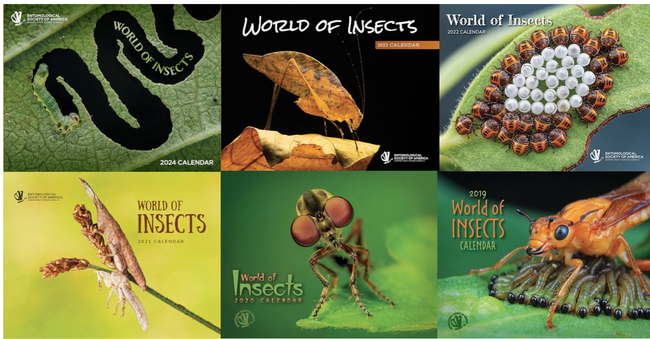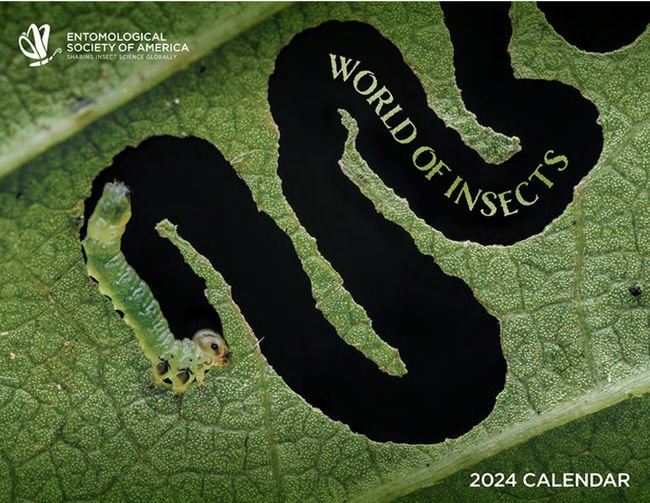
You'll see insects you've never seen before--and learn a little about them.
The cover image of the larva of the elm zigzag sawfly, Aproceros leucopoda (order Hymenoptera, family Argidae), native to Asia, is especially spectacular. It's the work of Christian Brockes of Germany.
"The elm zigzag sawfly is an east-Asian pest of elms (Ulmus spp), invasive in Europe since about 10 years ago and now also established in some North American regions," the ESA text relates. "The common name was inspired by the very distinctive patterns that their larvae leave on elm trees, while feeding. In large numbers, this species can critically damage elm populations. Often dozens of the tiny larvae--each only a few millimeters long--can be found on a single leaf, which they can skeletonize in a short period of time."
Scientists first detected this pest in the United States (Virginia) in 2021. Since 2022, it's been confirmed in four other states: Pennsylvania, North Carolina, Maryland and New York, according to research published in July 2023 in the Journal of Integrated Pest Management. The elm zigzag sawfly feeds exclusively on elms (Ulmus spp). It draws its name from the zizag-shaped pattern on the leaves as the larvae feed.
ESA prides itself on publishing world-class photography. Among the eight judges this year: Alex Wild, curator of entomology at the University of Texas and a doctoral alumnus from UC Davis. Wild studied with ant specialist Phil Ward, professor of entomology, UC Davis Department of Entomology and Nematology.
ESA issues a call for photos every January, and publishes the calendar every November. Of added interest, unselected images may appear on social media in the ESA's weekly "Arthropod Photo of the Week." Follow "Arthropod Photo of the Week" via the #arthropodPOTW hashtag on Twitter, Facebook, Instagram, and Mastodon.
We remember that an image of a hoverfly by UC Davis alumnus Alexander Nguyen appeared in the 2018 World of Insects Calendar. (See UC Davis of Entomology and Nematology website.) Judges chose his photo as one of the 12 winning images from a field of 560 entries submitted by 133 photographers from multiple continents. Nguyen captured the image at the UC Davis Stebbens Cold Canyon Reserve in April 2017, using his Canon 7D camera and a MPE 65-mm lens. Senior insect biosystematist Martin Hauser of the California Department of Food and Agriculture identified the hover fly as a male Platycheirus trichopus (Thomson, 1869).
What images are in the 2024 calendar? You'll see an ant tending treehopper nymphs, a chalcid wasp on Hemipteran eggs, stingless bees, a sunburst diving beetle, a Baltimore checkerspot butterfly, a Corsican owlfly, an ant-mimicking crab spider, a giant silk moth, an ambush bug preying on a bumble bee, a chestnut weevil, a poplar sphinx moth and an East Asian red damselfly. In addition, images that won honorable mentions share space on the calendar.
You can order the calendar here.
The 7000-member ESA, founded in 1889 and located in Annapolis, Md., is the world's largest entomological organization. It is affiliated with educational institutions, health agencies, private industry and government. Members are researchers, teachers, extension service personnel, administrators, marketing representatives, research technicians, consultants, students, pest management professionals, and hobbyists.
Attached Images:
